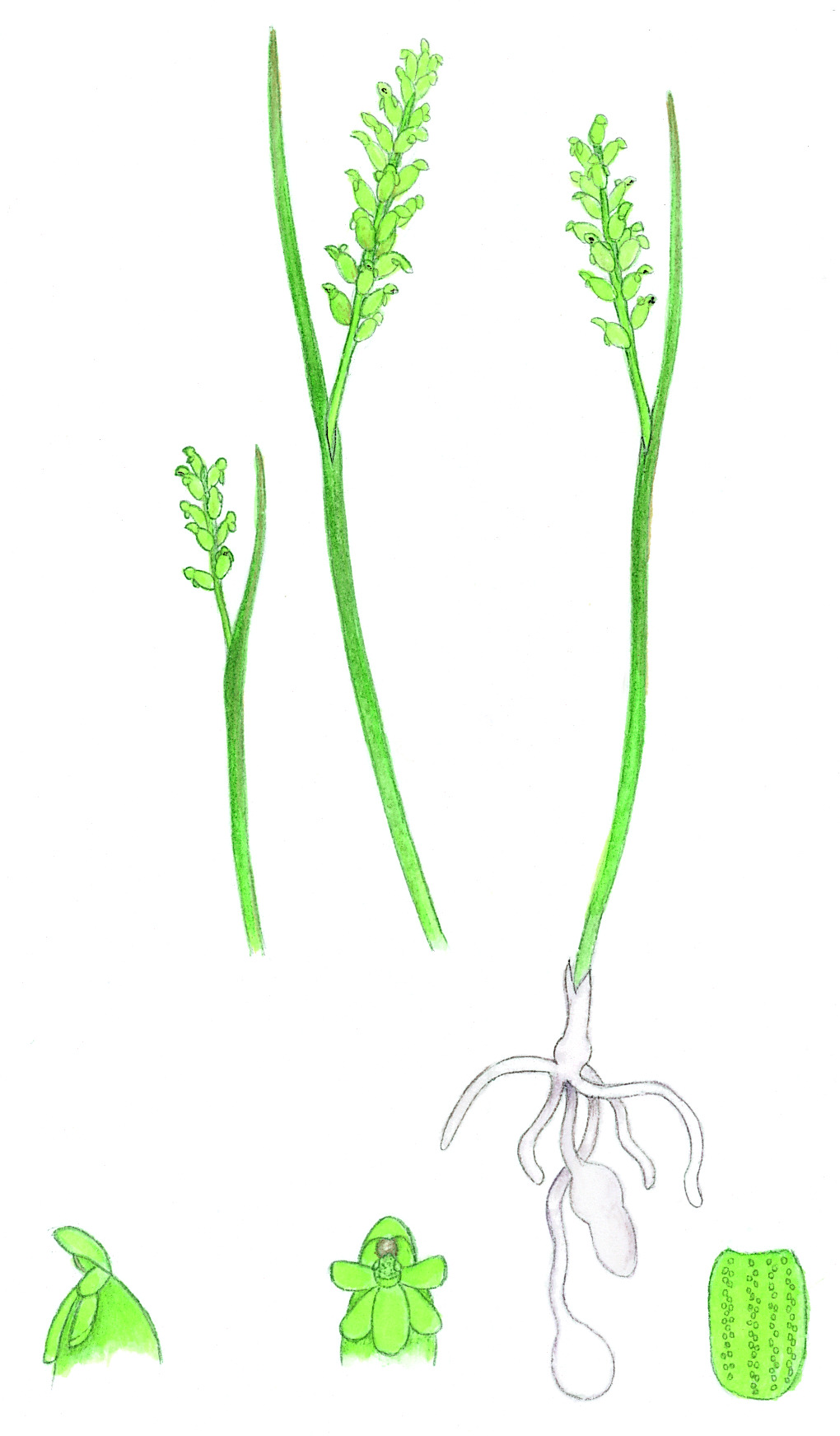Microtis atrata
Lindl. Yellow Onion-orchidFlowering stem 5–12(–25) cm tall, slender to stout. Leaf erect, 3–9 cm long, almost solid, yellowish green; sheath opening close to bottom of inflorescence. Flowers 2–40, yellowish green, drying black, sometimes fragrant, minute, semi-erect, in dense spike 1–4 cm long; ovary obovoid, c. 2 mm long, sessile; dorsal sepal circular to ovate, c. 1 mm long, very obtuse, widely hooded; lateral sepals oblong, shorter than dorsal sepal but longer than petals, slightly concave, somewhat acute, spreading but not recurved; petals ovate, sickle-shaped, c. 0.5 mm long, concave, spreading below the dorsal sepal. Labellum reflexed, ovate to elliptic, 1–1.5 mm long; margins entire; apex obtuse; lamina with a dark green basal mound and often with 2–6 longitudinal rows of tiny papillae; calli absent. Column rugose and glandular. Flowers Sept.-Dec.
Wim, GleP, VVP, GipP, OtP, WaP, CVU, GGr, DunT, EGL, WPro, HSF, Strz. Also WA, SA, Tas. Found in swamps or soil that is boggy for part of the year, mainly in near-coastal areas.
Microtis atrata has the smallest flowers of any Australian terrestrial orchid. This feature, accompanied by the erect, almost solid leaf, the black colouration of dried plants, and the ovate to elliptic labellum without calli, distinguish it from all other species of Microtis.
The recent placement of this species into the monotypic genus Microtidium has not been generally accepted.
 Spinning
Spinning

